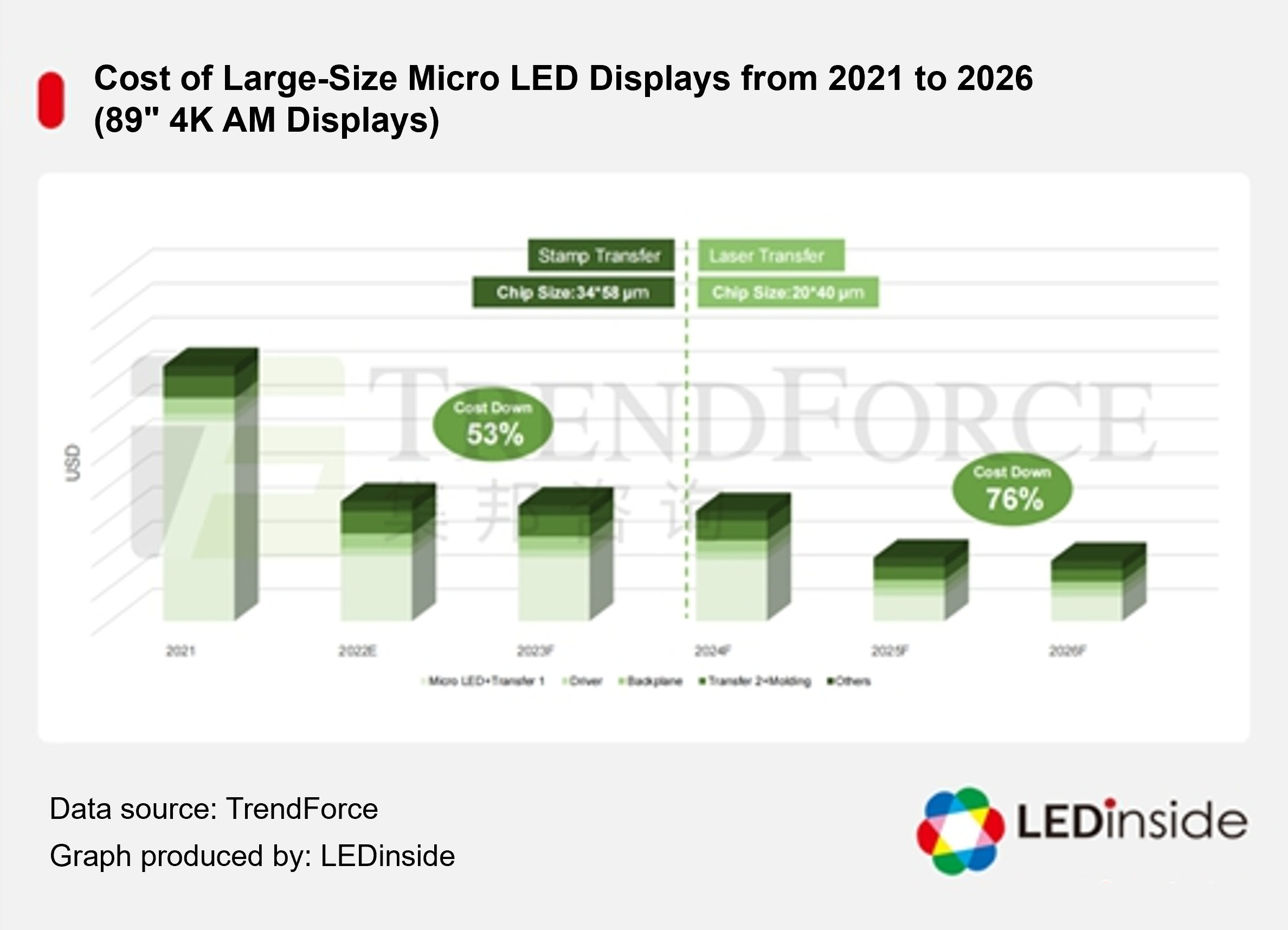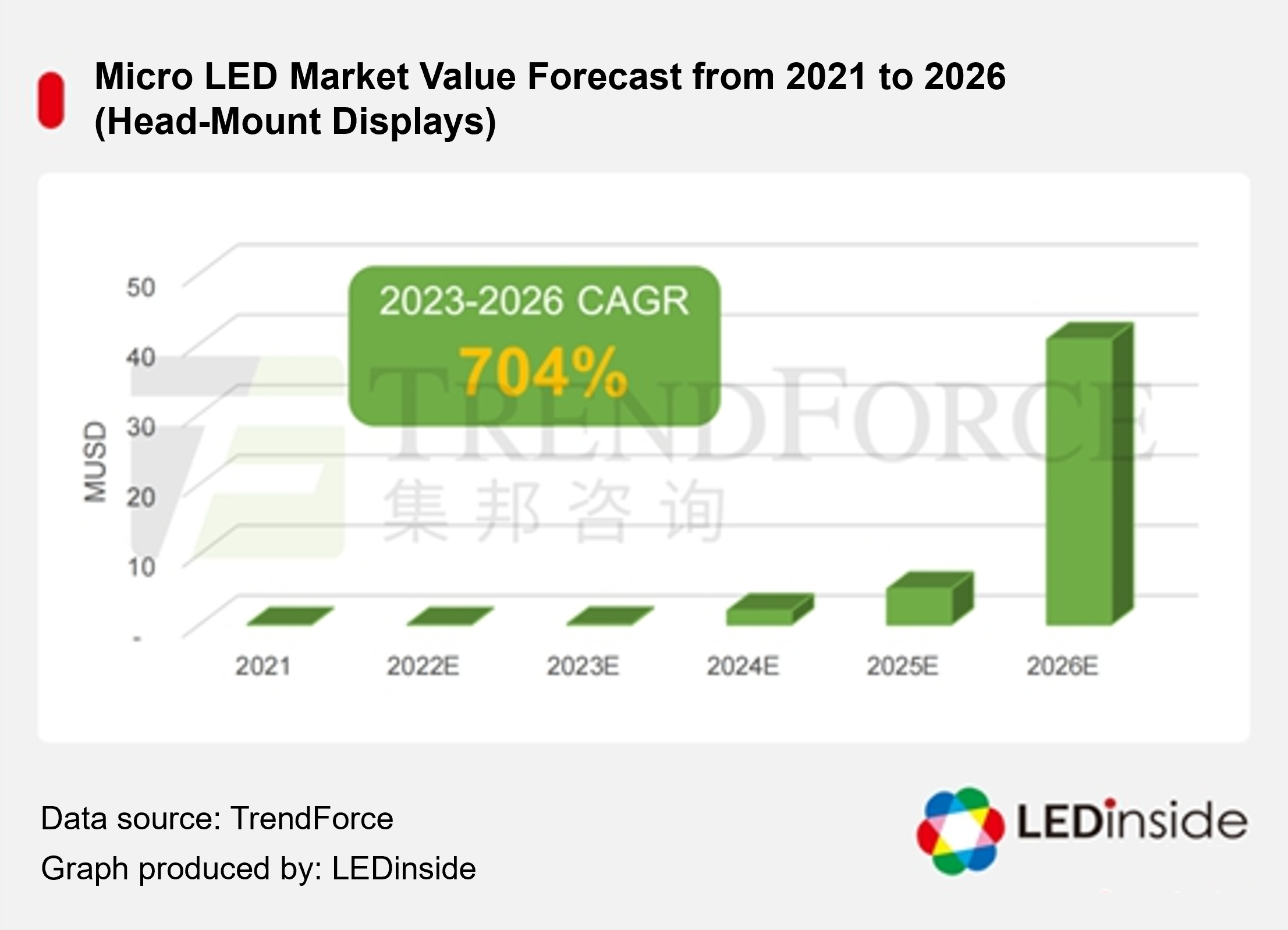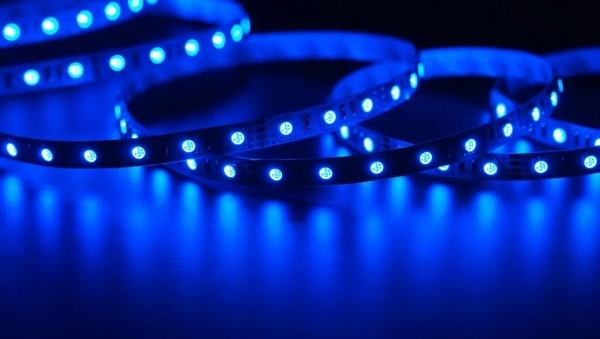Following years of development, Mini/Micro LED new display technologies have made critical breakthroughs, with end products often being unveiled in front of the public. However, there are several challenges for Mini LED and Micro LED—each at different development stages—to overcome before becoming mainstream display technologies.
Following years of development, Mini/Micro LED new display technologies have made critical breakthroughs, with end products often being unveiled in front of the public. However, there are several challenges for Mini LED and Micro LED—each at different development stages—to overcome before becoming mainstream display technologies.
Mass Production Kicks off for Large-Size Micro LED Displays
Following years of development, large-size Micro LED displays have entered the mass production stage this year, thereby stimulating the development of relevant components, equipment, and manufacturing processes. More suppliers entering the Micro LED market and the trend of display miniaturization will become keys to chip cost reduction.
The major approach to mass transfer has shifted from the current pick-and-place process to laser-based mass transfer that is faster with a better utilization rate, which can also help optimize the Micro LED manufacturing cost. Moreover, as chipmakers have built 6-inch epi-wafer plants and expanded production capacity, costs of Micro LED chips and overall production will decline as well.
With the said material, technological, and production capacity advances, the cost of an 89-inch 4K Micro LED TV will—as TrendForce predicts—sharply drop by 70% or higher between 2021 and 2026.

Smart Glasses Have Given Rise to Micro LED
Driven by the metaverse frenzy, transparent smart glasses (AR glasses) have made Micro LED a hotly anticipated technology. However, AR glasses are faced with great challenges regarding technologies involved and potential markets.
Micro-projection and waveguide have been two major technological challenges. Currently, micro-projection technologies have difficulties in achieving desirable field of view, resolution, brightness and optical engine design, while luminance decay is still a major problem for waveguide approaches. As for market-related challenges, how much value AR smart glasses can bring to consumers and users remains uncertain.
Regarding optical engine design, AR glasses must have a high number of PPI (4,000 at least) as they emphasize features of small area and high resolution. Therefore, the size of each Micro LED must be lower than 5um to achieve miniaturization and high resolution design.
Indeed, ultra-small Micro LED is still at the introduction stage concerning luminous efficacy, full-color display and wafer bonding results, but the high brightness and long lifetime of this new component—which Micro OLED can hardly achieve—are ideal for AR glasses.
TrendForce estimates that the market value of Micro LED for AR glasses will soar between 2023 and 2026 with a 700%+ CAGR after relevant technologies improve.

In addition to its suitability for large displays and AR glasses, Micro LED boasts excellent compatibility with flexible, transparent design. Therefore, Micro LED will have a promising future in the automotive display and wearable markets, inspiring creative applications different from those powered by the existing display technologies.
Conclusion
In summary,Micro LED has reached several milestones in the large display sector, along with new opportunities arising in AR glasses, automotive displays, and wearables applications. In the long run, Micro LED, as an ultimate display solution, is highly promising concerning future applications and value.
